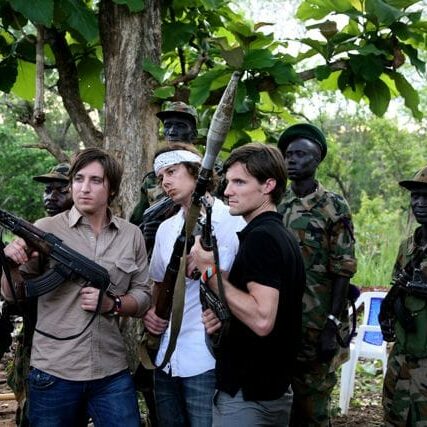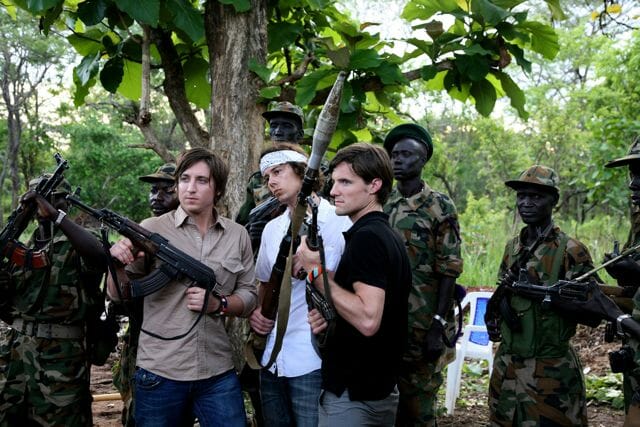

The founders of Invisible Children, clearly aware of the serious and complex nature of the conflict. Photo via Invisible Children
Over the past week or so, Ugandan guerrilla leader Joseph Kony has become a very famous man. Invisible Children, an American charity based in San Diego, California, has produced a viral video called KONY 2012, which seeks to “make Kony famous.” What’s their goal? Find Joseph Kony and try him before the International Criminal Court.
Their drive to bring Kony to justice has had some results: the United States has decided to deploy 100 advisors to the region’s armies to assist them in finding Joseph Kony. But before you start making posters and changing your Facebook display picture, you should probably think about the history of the region and the history of U.S. intervention in Africa.
Since the beginning of British colonial rule in Africa, there has been a divide between the north and the south of Uganda. After the fall of Idi Amin in 1979, several groups within Uganda began fighting for power. The Acholi people of northern Uganda held power for all of six months during this time, before being overthrown by the current president, Yoweri Museveni, in 1986. Members of the previous government joined with other disgruntled fighters in the north to create the Lord’s Resistance Army (LRA), led by one Joseph Kony. The LRA, as Invisible Children points out, eventually also began to use child soldiers.
To this day, the divide between the north and south of Uganda, strengthened by British development, has not been addressed. The bill outlining U.S. intervention in Uganda, the southern Sudan and the Congo, doesn’t mention any of this. Instead, it calls for an increased police and military presence from Yoweri’s army.

The most important question to ask when war is being proposed is the following: Why? Joseph Kony is a shadow of his former self. He has just 250 soldiers under his command. There’s no major media push to find Henry Kissinger, who actually has an arrest warrant for his crimes in Argentina and Chile. So why are we chasing Kony? Why is the U.S. getting involved in Africa, again?
Central Africa is one of the most resource-rich areas in the world. Diamonds, uranium, tin, gold, copper and coltan are all found in this region of the world. Coltan is used in cellphones, other electronics and to finance warlords in the Congo.
Using “humanitarian intervention” as an excuse to invade Africa is not new: Somalia was billed as a humanitarian intervention, but it too had strategic importance. Not for its resources, but for its key position in the Horn of Africa, near the largest shipping line in the world. There is a reason why there is a NATO naval detachment off the coast of Somalia, and it has nothing to do with stopping foreign trawlers from fishing in what used to be Somali waters.
I would like to applaud the makers of KONY 2012 for making a very impressive video, and for making many people aware of whom Joseph Kony is. But I would like to remind everyone that it is important to think critically about the content of your media and be wary of any argument for military intervention.






